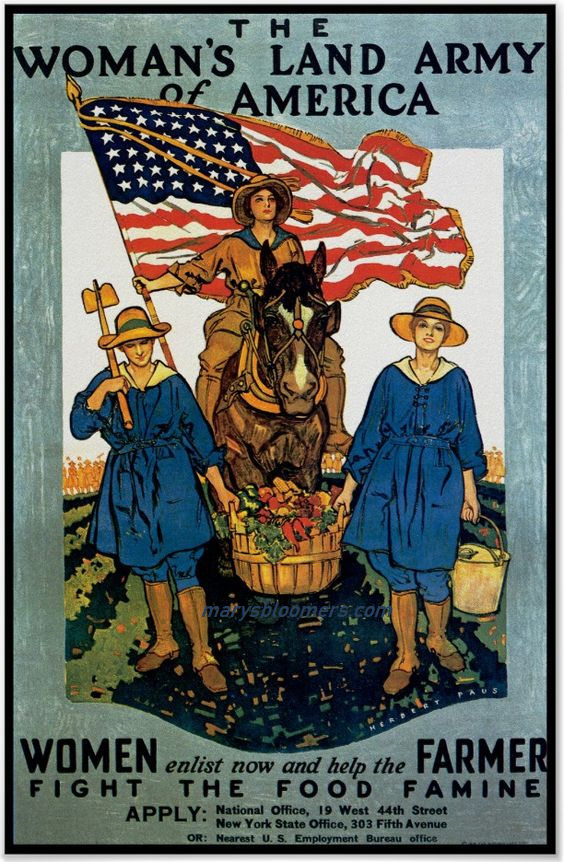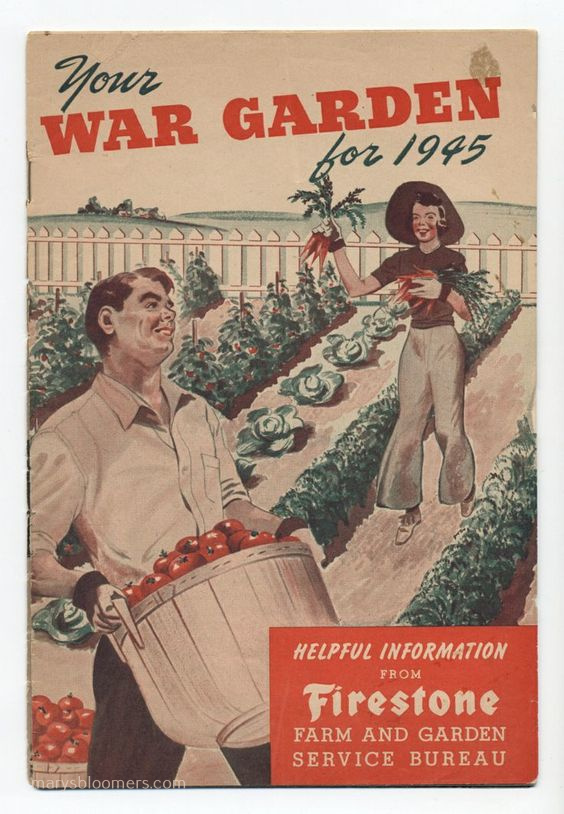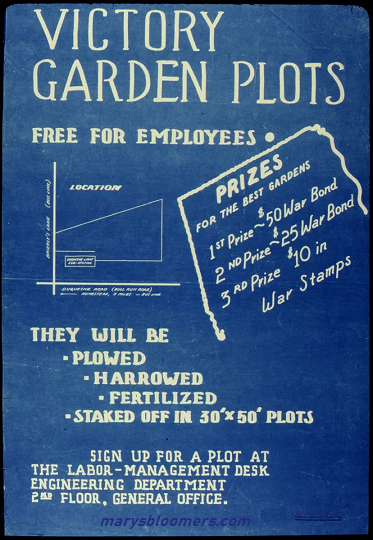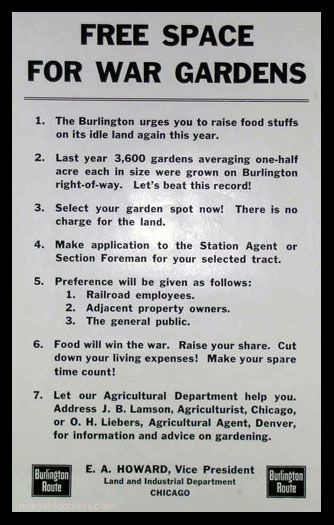
References: |
War
propaganda or not.... At their peak, there were
more than 20,000,000 Victory Gardens planted across the
United States. US population in 1940 was 132
million. Americans without a yard
planted small Victory Gardens in window boxes or on their porch or
patio.
So, why has this not
become a voluntary American tradition?
|
|
|
|
|
"Food For Freedom" "Beans Are Bullets", "Potatoes Are Powder"... there were many propaganda phrases used to get us going and hoeing.
Victory gardens, also called war gardens or food gardens for defense, were vegetable, fruit, and herb gardens planted at private residences and public parks during World War I and World War II. In wartime, governments encouraged people to plant victory gardens not only to supplement their rations but also to boost morale. They were used along with Rationing Stamps and Cards to reduce pressure on the public food supply. Besides indirectly aiding the war effort, these gardens were also considered a civil "morale booster" in that gardeners could feel empowered by their contribution of labor and rewarded by the produce grown. This made victory gardens a part of daily life on the home front. There were Victory Garden and Rationing movements in several countries.
The farmer also deserves a lot of credit for the sacrifices he was also asked to make.
During World War I, the newly created U.S. Food Administration urged Americans to conserve food so that more could be exported to Europe. Fourteen million Americans signed “pledge cards,” agreeing to observe wheatless Mondays, meatless Tuesdays and porkless Saturdays.
During World War II, Americans were limited to locally grown produce
because trains and trucks had to be used to transport soldiers, vehicles,
and weapons. Planting
Victory Gardens helped make sure that there was enough food for US
soldiers fighting around the world.
Consider the fact that in this age of politicizing everything, including our well-being, we have to actually fight, sue and legislate or defend ourselves in courts, to be permitted to grow our own food in some cities. Horror of all horrors..... using your tastefully landscaped front yard to grow little beds of berries and food, conserving water by using rain barrels inconspicuously on our own properties, and as payers of taxes, we still have to fight to allow the children to grow gardens in schools, ask that they be provided with a healthy school lunch, and provide good food during the school day to so many children who go hungry at home. I find it pitiful, ignorant, and morally wrong. If you
think about the new age of enlightenment concerning "new"
gardening methods and sustainability movements, that used to be called
common sense.... During WWII, what I call "guerilla gardening" was patriotic. Now it's sometimes derided, and considered a New Agey Thing that old hippies do. I've even heard the preposterous and ignorant notion that growing our food kills farm and supermarket jobs, or that people grow vegetable gardens because they're too poor or too cheap to buy food. Seriously. And, of course, these differing opinions differ across particular regions and cultures in the U.S. It's worth noting, however, that such idiotic derision appears to be non-existent when i arrive on someone's doorstep bearing fresh berries, fresh and dried herbs, preserved jams and sauces, or share meals with others that I created in winter with the ingredients from my summer harvests. No, ma'am. I never hear anything but a yum! and a very grateful thank you. Do
like the ladies during war food rationing did... "Grow Your Own,
Can (preserve) Your Own".
Article
©2020 Mary Hyland for Mary's
Bloomers Graphics on this page were chosen for this article, and not available for download.
|
To enjoy
some vintage WWII Victory Garden harvest and
Meal-Stretching Rationing Recipes, you can find them
here---->
For a more
in-depth look at the real Victory Gardens, and a peek at life
during the war years
Download free .pdf versions of Vintage Victory Garden
Guides below:
"A Victory Garden"
Job P. Wyatt and Co. Seedsmen "Garden For Victory"
1943
"Victory Garden Leaders Handbook"
If you're
interested in a graphics collection of
popular WWI and WWII posters, click
here
For Victory Garden and Wartime rationing graphics, click here
|
|
|
Content, graphics and design© 2020 Mary's Bloomers
This site uses Watermarkly Software |













